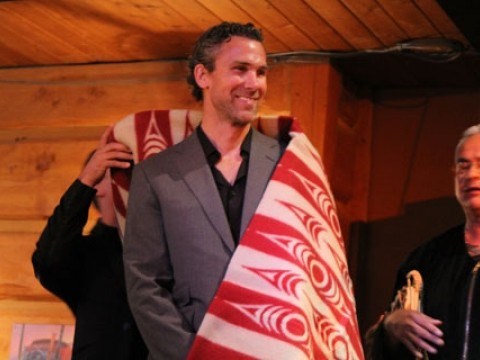The Vancouver Canucks planned to win a Stanley Cup this year.
They came just short of their goal, falling 4-0 to the Boston Bruins in the final of a series that went to seven games.
The reason they got there, said former Canucks captain Trevor Linden, is that they had a plan and they executed it. It brought them closer to a Stanley Cup than 28 other teams.
Having a plan and executing it was the message that Linden brought to the graduation ceremony for the seventh cohort of Leadership Sea to Sky, a program that provides lessons on leadership to business people, politicians and other residents throughout the corridor.
As keynote speaker, Linden said the best coaches he played for were the ones who had a roadmap on how to reach a goal.
"We knew we wanted to win, but the best coaches I've played for, (Pat) Quinn, (Marc) Crawford, (Alain) Vigneault, they gave us players a road map about how to get there," he said. "What small steps we needed to take to make sure we got where we needed to be and gave us the best chance of winning."
Though Linden never won a Cup with the Canucks or the three other teams he played for in his career, he nevertheless led and played with some clubs that saw plenty of success in the National Hockey League. At 21 he became team captain and led the Canucks through six playoff runs including the 1994 march to the Stanley Cup Final.
The 1997-1998 season was a turning point in Linden's time with the Canucks. The team took on manager/coach Mike Keenan and centre Mark Messier, and Linden relinquished his captaincy to the latter. Later that season he was traded to the New York Islanders and the Canucks missed the playoffs for four straight seasons.
Keenan, Linden said Saturday, was an example of a coach who worked without a plan.
"You can't just tell someone to go work hard and hit everything on the ice and think it's going to work out because you're just going to get ventilated and that's the way it looked," he said.
"No plan to break the puck out, no plan to forecheck, no plan in the neutral zone, and you know, when I think about the Crawford era, when I think about the Vigneault era, you talk about structure, you talk about detail, you talk about what he expects of you.
"That's not a hockey thing, that's an everything thing, regardless of what business you're in, that's a staple."
Linden didn't just dwell on hockey to provide a lesson in leadership. He also talked about his time as president of the National Hockey League Players' Association (NHLPA), the union representing players' interests.
Elected to the job in 1998, he oversaw the association as it negotiated a new Collective Bargaining Agreement during the 2004-2005 NHL lockout. He helped negotiate an agreement that set a salary cap for all teams, tied to league revenues. The agreement clamped down on NHL teams stacking their rosters with major players.
Linden remembers having to find solutions to complex problems, and that meant hashing out disagreements with people on your own team. As NHLPA president, he remembers having more arguments with his own side than the other.
One in particular came with hockey star Dany Heatley, then a top-flight winger for the Ottawa Senators and a candidate for a major salary increase.
Heatley called him before the agreement was set in stone and said he didn't agree with what Linden and the NHLPA were doing. Linden later got another call from Heatley, thanking him for his work, and the next day he opened the paper to find that the player had signed a six-year, $45 million contract extension, paying him $7.5 million a season.
"It worked out pretty well for you, didn't it Dany," Linden told a laughing audience.
He told this story as a way of telling future leaders that it's important to hash out disagreements in a workplace. It's better, he said, when people disagree and talk it out. If everyone's agreeing, he said, there's something wrong.
"You have to create an environment where your leadership group can come in and provide feedback," Linden said. "Be the moderator, and at times create debate. Pull it out of people. The last thing you want is a group that agrees with you on everything.
"If I was a manager I would want a healthy debate bordering on arguing rather than everyone just agreeing with each other. Your leadership team needs to buy-in, and the best way to get this, is to ask them what they think is the right thing to do, and challenge them, and allow them to have their say."




